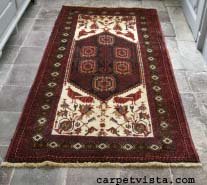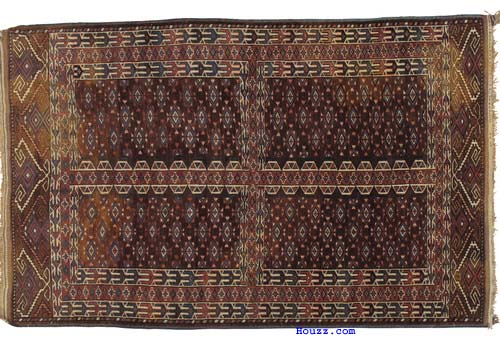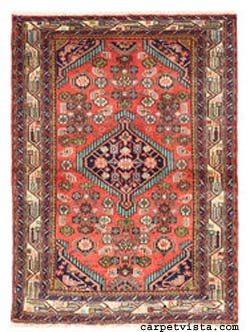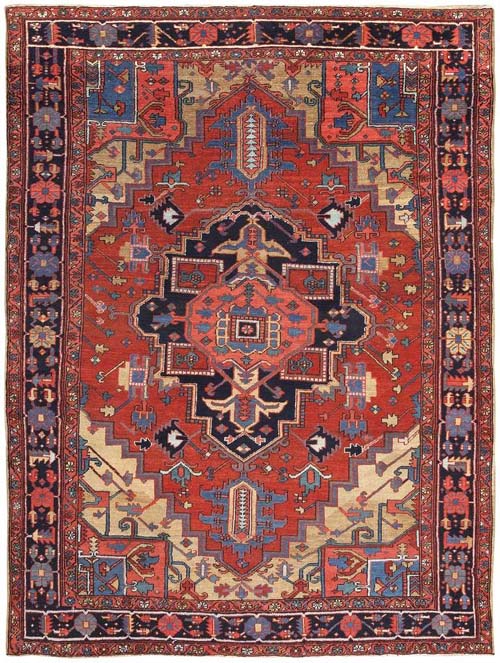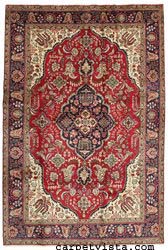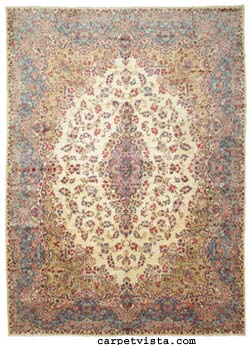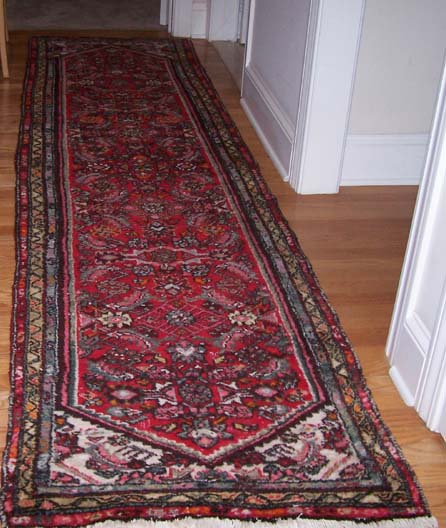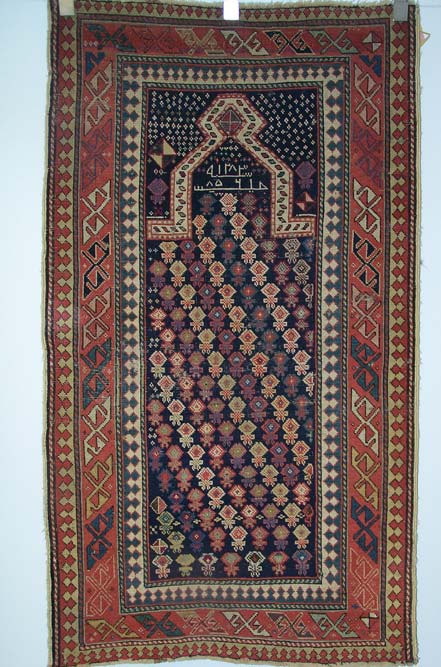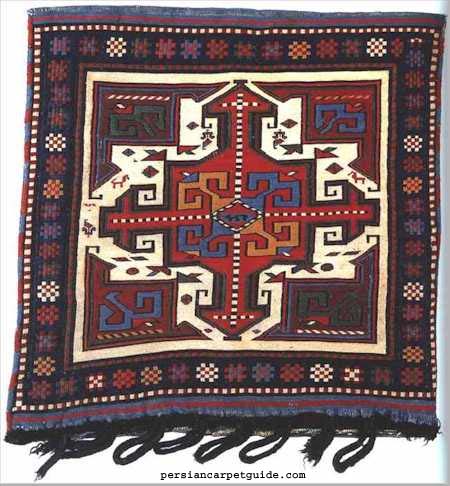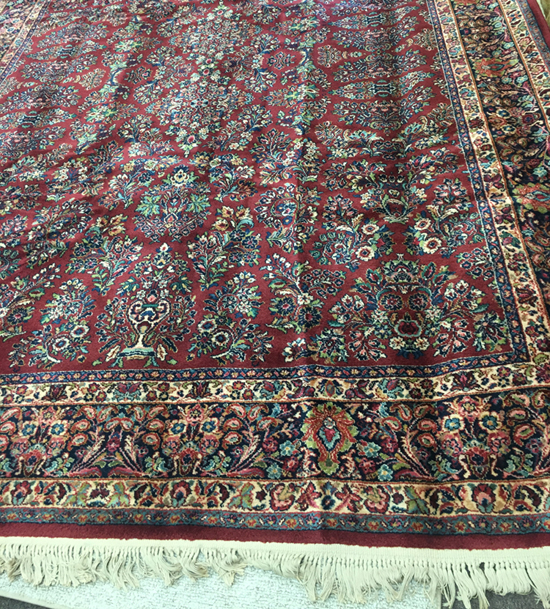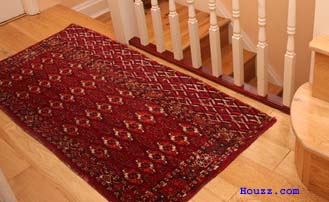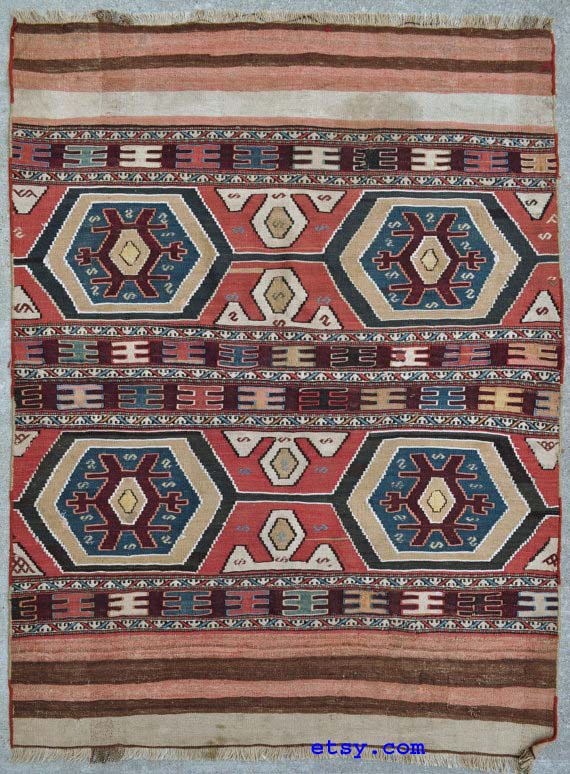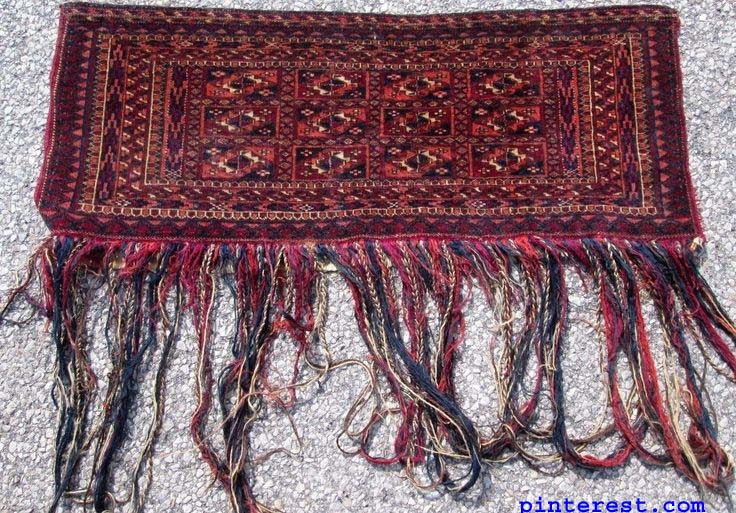ORIENTAL RUGS-
TYPES and FORMATS
Oriental Rugs-Types and Formats classifies oriental rugs into some easily recognizable categories for the beginning collector. Even though oriental rugs do not fit easily into one or another category, it is hoped these particular categories will help oriental rug enthusiasts to better understand these rugs and their history and whet the appetite for a continuing study of this fascinating subject.
CAVEAT!!
The rugs shown either as photos or videos in this Oriental Rugs-Types and Formats are just examples.
Looking at the design or colors of rugs is not enough information to identify them correctly. The construction, including the type of knot, fibers used, types of dyes, etc. are all essential to determining the actual identification of an oriental rug. These examples are only meant to stimulate your interest in oriental rugs.
It is a well-known fact that the study of oriental rugs invariably leads to the realization that there is never a ‘never’ and never an ‘always!’
Oriental Rugs-Types and Formats
TYPES
Tribal or Nomadic Rugs
These rugs are typically woven by nomadic people living in portable homes. They are usually smaller pieces woven on horizontal looms for easy transport. They usually contain a limited number of colors and patterns and are usually oddly shaped and coarsely woven. The designs tend to be geometric.
Wool is the most common material but horsehair and camelhair are sometimes used occasionally for the edge and end finishing. Silk can be used at times, but only in a few knots and in limited areas.
Examples of tribal rugs are Baluchi and Turkoman.
Village Rugs
Village rugs are those woven by people living in agricultural communities. These people have more materials available to them as well as permanent looms which are usually vertical looms (although many villages continue to use horizontal looms as well). The warps (up and down cords) of these rugs are usually cotton with the wefts (side to side cords) made of either wool or cotton.
Village rugs are woven in utilitarian sizes, are occasionally misshapen, and usually colorful. The quality of the weave will vary depending on the skill level of the at-home weaver. The patterns are more curvilinear than tribal rugs but still quite geometric.
Examples of village rugs are Hamadan and Heriz.
City Rugs
These are rugs usually woven in commercial establishments by skilled craftspeople on permanent looms. The spinning, dyeing, designing, weaving, and finishing are all done here. A foreman will be in charge to oversee the speed and quality of the weaving being produced.
The rugs are typically intended for export and they come in various 'American' sizes. The warps and wefts are usually cotton.
City rugs are fine in quality and fancy in design. Examples of these rugs are Tabriz and Kerman.
Palace Rugs
These rugs are huge in size, very complex in design, and very fine in quality. They used to be woven by Royal commission and it is rare to find them today.
Oriental Rugs-Types and Formats
FORMATS
Carpet vs. Rug
The terms ‘carpet’ and ‘rug’ are often used interchangeably when speaking of hand made oriental pieces. Usually a ‘carpet’ is considered to be 6’ x 9’ or larger and anything smaller is considered a ‘rug’.
At ABC, we refer to oriental and other types of woven fiber pieces that are ‘loose-lay’ as (area) rugs and we refer to ‘carpets’ as wall-to-wall tacked-down machine-woven pieces.
Runners
Runners are loose-lay rugs measuring approximately 3’ to 4’ in width and anywhere from approximately 8’ to 20’ in length. They are most often used in narrow areas such as hallways and even on stairs.
Prayer Rugs
Prayer rugs are typically 2’ to 4’ wide and approximately 4’ to 8’ long. The oriental prayer rug usually has a design in the shape of an arch at one end (but rarely at both ends), which is meant to represent the Mihrab or Mehrab, a niche in the wall of a mosque facing the city of Mecca. The faithful pray in front of this niche or Mihrab, which is also the symbol for the ‘gateway to paradise.’
These prayer rugs, whether actually used as such, represent the idea of reverence and are very popular oriental rugs today.
Utilitarian Rugs
Utilitarian rugs have many different purposes, as the name implies. Examples of these are donkeybags and Juvals, which are typically rectangular bags meant for carrying goods such as grain or salt or for personal belongings such as money, tobacco, etc. Similar weavings to the Juvals are Torba and Mafrash. Bagfaces are Donkeybags which have been cut and their backs sold as small rugs.
Other utilitarian rugs include tent or yurt fragments such as door and window coverings, tent bands, and tent door surrounds etc. There are also bags and saddle, horse, and camel covers, especially those used during weddings and intended as pure adornment. Most interesting are the decorated pieces used for different parts of a horse or a camel such as their heads, knees, chests, flanks, and rumps.
Oriental Rugs-Types and Formats
CLASSIFICATION BY AGE
Antique - 100 years and older. Always check for dry rot or previous repairs. Inspect for excessive wear, broken foundation threads, and replacement fringes. Be wary of old rugs that look new! They may have been repaired or painted.
Semi-Antique – 50 to 99 years old. These rugs are fairly easy to find today. To find a bargain, make sure to tell the rug dealer if you have seen a rug similar in age and design for less.
Vintage - 20 to 49 years old. These rugs will probably be sub-standard if they are post-embargo Persian rugs from Iran. During the embargo, since there was no longer a huge market for the rugs, the weavers and dye masters did not hand down their trade to the next generation, causing a generational gap in those trades. However, rugs from other countries may be better than average for their own regions.
Inspect for color runs or rugs that look like they have been unraveled and then shortened or overcast at the ends.
New - 0 to 19 years old. In this category you will find many tufted rugs which are held together with glue and not only will not last long and can emit a nasty odor from the off gassing of the glue. Knotted or woven rugs without glued on backings will last much longer.
Be aware that many rugs manufactured in the last 20 years or so have been made more quickly, faster, and cheaper, and are not meant to last for many years. An exception to this rule are some of the wool, machine-made rugs such as Karastan.
Unfortunately, Karastan stopped production of its rugs in 2019. Mohawk Industries had acquired the Karastan brand in 1993 and when the Karastan factory closed in 2019, Mohawk moved the Karastan manufacturing to Georgia from North Carolina. The Karastan rugs today are not made the same way on the special axminster looms as the original Karastans. They are now usually made with synthetic fibers as well.
Oriental Rugs are an Art Form
As mentioned above, the above categories listed in Oriental Rugs-Types and Formats are somewhat simplistic. Because oriental rugs are an art form, the myriad of combinations of rug types, designs, formats, and weaving styles tend to be overwhelming at first. The more rugs you see and the more knowledge you gain, the more your journey will continue to be a fascinating and enjoyable one.
Knowledge is important, but equally important, as with all art forms, if a certain rug speaks to you and fits into the design elements and colors of your home, your individual preference is what finally counts when purchasing an oriental rug.
Our website, ABC Oriental Rug, contains a number of articles that may be helpful if you are just beginning the journey into the exciting world of oriental rugs or if you are seeking more specific answers to questions you may have. Just click here.
Please also remember that anytime you have any question about oriental rugs in general or a specific oriental rug, please stop in to our office or text or call us at 607-272-1566 and we will be happy to help. We have a combined knowledge of over 100 years in this field. You may also email us at info@abcclean.com or contact us through our website.
Top of Oriental Rugs - Types and Formats
"The Cleanest Clean You've Ever Seen."
by
ABC Oriental Rug & Carpet Cleaning Co.
130 Cecil Malone Drive Ithaca, NY 14850
607-272-1566
Beluch Rugs
sHamadan Rugs
Tabriz Rug
Kerman Rugs
ADDITIONAL READING
Contemporary & Collectible Rugs
